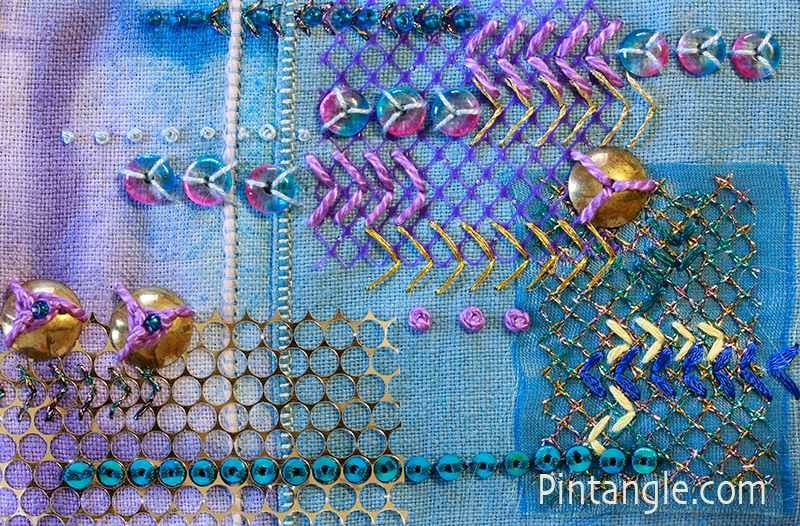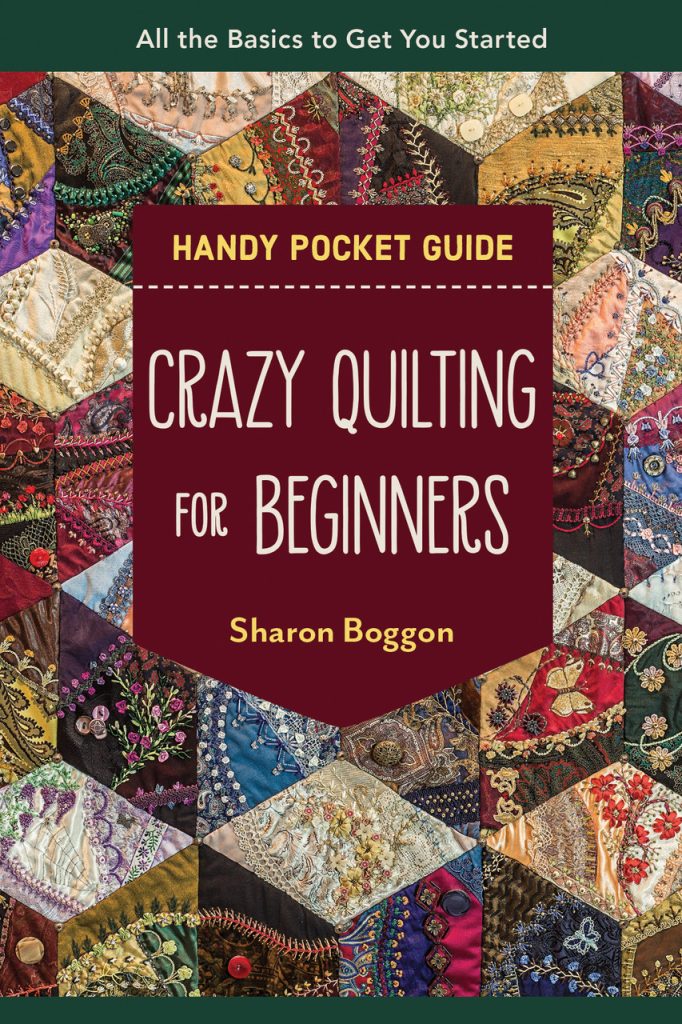We are coming up to the end of the year and the start of a new one. We are also emerging from a global pandemic that has touched so many of our lives. It’s time to breathe and take a moment away from the rush and the worries. For many of us — including myself — this month is a good time to reflect on the year and how we have spent our time. We review our goals and ask questions about what we achieved in the past year. Today I want to talk about this process of review and goal-setting.
The pandemic changed many people’s lives. It shook some to the core. During lockdowns and times of isolation many people reassessed their life. They looked at how they spend their time, use the internet, what activities they prioritised and how they spent their money. Now, as we emerge from the pandemic we are taking stock of the changes we want to make in our lives and of course, some people are adapting to new circumstances, not always created out of choice.

What has the pandemic got to do with stitching? Pre-pandemic feels like an age away, but I sense that stitchers who were constantly distracted by the bright and shiny stitching fads, often choosing the quick and easy option have re-assessed their level of satisfaction in these types of projects. In doing so they started to slow down their stitching, taking self-care time to create something meaningful. Slow stitching and the philosophy behind it has become very popular, but not just slow stitching, as many stitchers have discovered or re-discovered embroidery during lockdowns. Many people found a whole new set of ideas about self care and handwork.
Not everyone has the same level of motivation to set goals. The pandemic threw some people’s lives into total disarray and they are in a stage of recovery that is taking all their attention and energy. There have been conversations about physical and emotional exhaustion brought on by the pandemic. For others, life is still tough and even just the thought of setting goals after the pandemic feels overwhelming. If you are in this situation, I feel this is where setting goals associated with stitching can help. I feel if you take control of one small area – an area of your life you love, such as stitching, it will energise you and aid mental health. Setting a goal in this area is a form of self-care.
We are living through an extraordinary time. Some people question the whole idea of setting goals. I see goals as very much associated with dreams – not about things, or events, but about who we want to become. Rather than setting a gaol associated with objects such as a new car, I see goals associated with, for example, building a skill. For many people, their pre-pandemic goals are simply not relevant anymore. It is not that they have lost their dreams it is just that their dreams have changed. They are in the process of this change and as yet haven’t quite sorted out what the new dream looks like. They are searching for a new ‘why’ or if they have the why, searching for how to apply it! this presents an opportunity to discover new things about ourselves with new priorities, opening us up to new experiences. In doing so, no matter what age we are, we have the opportunity to discover who we are becoming. For me that is an exciting idea.
Somebody once said to me:
A Dream is just a dream;
A Goal is a dream with a plan and a deadline.
For goal setting to work it has to be clear, measurable, realistic, and have a defined time frame.
Many people think of New Year’s resolutions as a bit silly, particularly since the pandemic. Others joke about how they make resolutions only to be broken in a few weeks. However, both of these approaches mean you miss an opportunity to take control of your life and shape what you want to achieve. As anyone who has been through a natural disaster knows, we do not have total control over what happens in life. But we can attempt to those shape those areas where we can take control, and learn from those we cant.
My Tips on setting goals
These are a few tips from me about setting goals and how to achieve them. Some are short and some are longer.
Firstly, be specific. Instead of saying “I want do more drawing in my studio journal” state that you want to work in your studio journal for 30 minutes, 3 days a week.
Next measure that specific goal. Instead of saying “I want to lose weight” state that you want to lose 5 kilos. Or instead of saying “I want to do TAST” state next year “I want work 20 stitches in the Take a Stitch Tuesday challenge”.
Set realistic goals. Look at what is possible in your life. For instance if you decide to “finish your UFOs”. That is an admirable goal (one of mine for this coming year) But some people have so much stuff in various cupboards around the house they will never finish their UFOs particularly in just one year.
You need to scope out the size of the task and see what is possible in the time you have in your life. Take all your UFO’s, out of bags, out of drawers, cupboards, containers etc. Round them up, decide if you want to finish them, if they are still something you want to do. Do the Marie Kondo thing. Take each UFO and ask yourself, if this is something that still brings you joy. Some things you will look at and realise you are no longer interested in it. It’s time to edit it out of your life — give it away, toss it in the bin or find some other way of getting it out of your creative life so it lo longer clutters up your head.

Next step is to take a good long honest look at how long each project will take to finish. Put an hourly estimate on it. Add up the hours on each project then add up the projects. How many hours will it take you to finish your UFOs? Divide those hours by 365 days and you know how many hours each day you have to stitch to meet your goal.
It may be less time than you think — which is great. You may find that you only need to work on UFOs for 30 minutes a day! that is an achievable goal in many peoples lives. On the other hand you may have a laughable number of hours so perhaps think about which UFOs need to be listed as a goal for THIS year, and set the others aside to finish in future years. Or more could hit the bin of course.
Spend time planning, but don’t get so caught up in preparations, and research that you avoid setting real goals and working towards them.

Keep it simple. Focus your energy on fewer but clearly defined goals. Huge long lists of goals never get done. Simplify a list down and tackle a few things at a time. I admit simplicity is never easy! I try to follow this advice and use 1 page of my journal to make my list – this year I am trying for my list of all stitching-related goals to fit on an index card. This makes me prioritise my most important goals and makes for very clear targets to work towards.
Have a realistic deadline or time-frame to avoid setting vague or distant goals. Define what you are going to do and when. It is easy to let time slide by or to be distracted by other things and trying out new projects. You need some of that too but if you set a deadline you are constantly reminded that you need to work towards that goal if you are going to achieve it.
Think about how you might accomplish your goals. Some folks might say “I want to do hand embroidery” instead of “I want to enrol in a hand embroidery class” or “I will do TAST and learn how to do hand embroidery.” Figure out how you are going to achieve your goal and make a step towards it.
Break a large goal down into smaller parts. Sometimes a goal is too big to envision yourself being able to do it. Break your large goal down into smaller goals. So if you want to make a crazy quilt. Think in terms of making 8 or 12 blocks. Make each block the goal. And celebrate each block you complete, or each part of the goal you have achieved.

It’s easy to set as goal but staying motivated can be an issue.
Constantly remind yourself of your goal. Make a note and stick it on your fridge door or inside your wardrobe cupboard or inside the cover of your studio journal. I pin a note on the wall in front of my desk and often also have it as an image on my computer desktop too. I used this trick to keep me motivated to train to walk the Camino de Santiago. It is a 500 mile (800 kilometre walk) across Spain. The walk I have done fully twice and 650 kilometres (400 miles) on the third time. A slide show of photographs from the hike keeps me motivated to walk daily so that I stay fit enough to be able to tackle the walk again. Find a way to constantly remind yourself what you want to achieve.
Going public is another way to stay motivated. Declare your goal publicly and be accountable. If you commit yourself publicly to a goal, on social media or to friends and family voicing a commitment solidifies that goal. Once you have stated publicly that you have a goal be accountable to that group of people and report back to them weekly or monthly, what ever is appropriate and stick do it! This of course is the principal behind TAST! Sharing the journey to learn something new can be fun.

Avoid getting side-tracked. I am a great one for getting side-tracked, particularly online! Now I ask myself: “How does this advance me towards my goal?” Most of the time it works but I have to admit not always, which leads me to my next point.
Be kind to yourself. Don’t beat yourself up if you get side-tracked just remind yourself of what your goal is and set about getting back on track. Life happens and often life is not lived to a timetable. Nothing wrong with that, but once the side-track has run its course, return to your main goal.
It is OK to change. Goals change and that too is OK. Sometimes a goal is not clearly defined, or something happens in life that means it is no longer relevant. It’s OK to change and often this means growth. Don’t forget to cross out the old one and note that the new one is a substitute goal. It is simple to set a new goal and change direction. I will be applying this one to help me sort out what UFOs I will finish!
Finally, review what you have achieved as the year progresses. Allocate some time to check-in with yourself and see how you are progressing. Celebrate what you have done. Post it to TAST or your social media or tell your friends! In the process, remind yourself and if necessary, re-orientate your goals to keep moving forward.
What do you think?
What do you do to achieve your goals. Do you set them, meet them or forget them? If you have any further tips share it in a comment. I would love to read it.

Have you seen my latest book?
My book Crazy Quilting for Beginners Handy Pocket Guide is out now. This pocket guide is a beginner’s guide that covers all the basics — but just the basics! If you want to start crazy quilting this resource will get you started.
Please note if you buy one of my books via this link as an Amazon Associate, I earn from qualifying purchases.



Can you tell me when your book is coming out in paperback in the
the UK. I followed the link on Amazon and it only has the kindle version.
I prefer a physical book when I am sewing.
Sorry Jacqui I thought the link would go to the book – it does that here but no doubt Amazon is re-routing you to the kindle version. It is already in Paperback. If you search Amazon it will come up – or you can get it form other sellers too of course. Hope this helps
Talking about goal setting, …. I will be getting back to my TAST 2022 stitches, which I’d like to complete. I think I read in one of your Pintangle posts that you will be removing the 2022 stitches. I don’t recall what the date is. If I have saved all the Pintangle emails, will I still be able to access the tutorials ? Or should I make a list and search in the Stitch dictionary ?
Thank you for your enthusiasm for stitching. Your work is exceptional!
Janice Baker
Janice The tutorials are all in the stitch dictionary and the list of stitches will be removed between Christmas and New Year